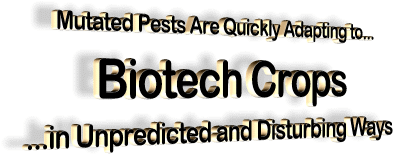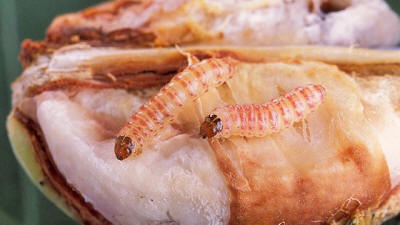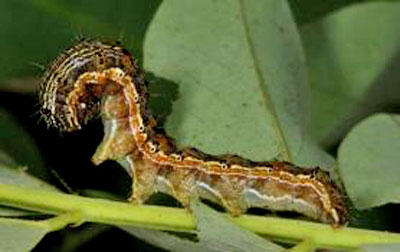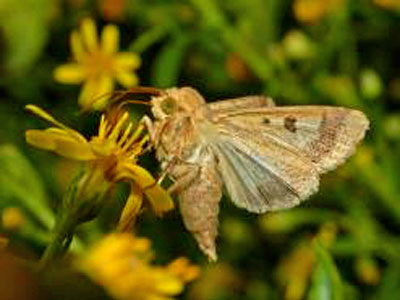|
By having toxins built into the plant
itself, farmers can reduce their use of environmentally unfriendly
insecticide sprays. But as any first-year evolutionary biology
student can tell you, insects are like the Borg in Star Trek: they
quickly adapt. And this is precisely what is happening - but in ways
that have startled the researchers themselves.
The development also raises the question of the potential futility of having to change the genetic structure of crops in perpetuity; given that insects are constantly evolving,
Mutated pests are quickly adapting to biotech crops in unpredicted and disturbing ways
Case in point are cotton bollworms.
To deal with these pests, genetic
scientists have developed an insect-killing cotton plant that
produces toxins derived from the Bt bacterium (geneticists say that
these toxins are harmless to most other creatures, including
humans). But the bollworms are developing a resistance. Scientists
have observed that a rare genetic mutation in bollworms makes them
immune to Bt - and that the mutation isn't so rare any more.
To stay ahead of the game, Tabashnik
studied bollworms in the lab just to see how they would adapt to the
toxin. Then, expecting to see the same sorts of adaptations in the
real world, he took a look at bollworms in China.
Speaking through a University of Arizona release, Tabashnik noted that,
A particularly big surprise was that the real world mutations will be more challenging to deal with from a genetic perspective.
They identified two unrelated, dominant
mutations in the field populations - and by dominant they mean that
one copy of the genetic variant is enough to confer resistance to Bt
toxin. This kind of dominant resistance cannot be readily slowed
with refuges, which are specially designed plants that work to
dilute the population of susceptible insects (this process makes it
difficult for two resistant insects to mate and produce resistant
offspring).
Mutated pests are quickly adapting to biotech crops in unpredicted and disturbing ways
As far as the real world mutated bollworms are concerned, they're starting to take off in China.
The researchers discovered that
resistance-conferring mutations in cotton bollworm were three times
more common in northern China than in areas of northwestern China
where less Bt cotton has been grown.
This "trouble on the horizon" indicates that geneticists are in the midst of an arms race with insects.
Each measure they enact will likely be
countered by the ever-adapting insects. It's difficult to know at
this point just how modified the crops will have to be to withstand
these pests, or how these new crops could impact on human health and
the very constitution of the insects themselves.
|



